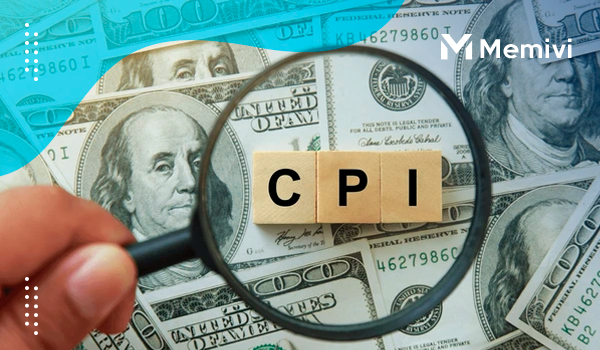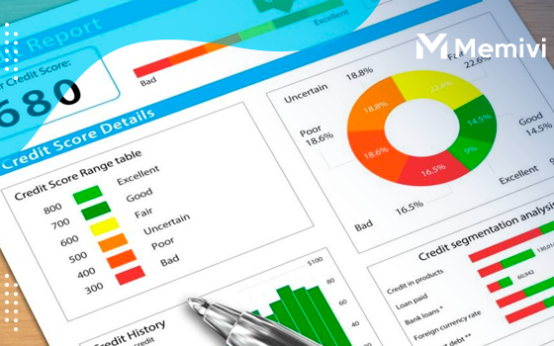
It measures the average change in prices that consumers pay for a basket of goods and services over time. However, many people do not understand how the CPI is calculated or how it impacts their lives. Inflation can have a significant impact on the economy, affecting everything from wages to interest rates, and even the prices we pay for goods and services.
Understanding how the CPI works and how it is measured is critical for anyone who wants to make informed decisions about their finances. In this post, we will demystify the CPI, explain how it is calculated, and discuss why it is such an essential indicator in the economy. By the end of this post, you will have a better understanding of inflation measurement and how it affects the economy.
The importance of measuring inflation
Measuring inflation is a crucial aspect of understanding the health and stability of an economy. Inflation refers to the sustained increase in the general level of prices for goods and services over time. It affects not only businesses and consumers but also policymakers and investors, making it essential to accurately measure and monitor.
The Consumer Price Index (CPI) is a widely recognized and reliable measure of inflation. It tracks the changes in the prices of a basket of goods and services typically consumed by households.
By analyzing the CPI, economists and policymakers can gauge the purchasing power of consumers and assess the impact of price changes on their standard of living. Understanding inflation is vital for several reasons.
Firstly, it helps in evaluating the effectiveness of monetary policies implemented by central banks. By measuring inflation, policymakers can make informed decisions about interest rates, money supply, and other economic tools to maintain price stability and promote economic growth. Inflation measurement is also crucial for businesses.
Fluctuations in prices can impact production costs, profit margins, and consumer demand. By tracking inflation, companies can adjust their pricing strategies, budgeting, and investment decisions to adapt to changing market conditions and maintain competitiveness.
Furthermore, inflation affects consumers’ purchasing power. When prices rise rapidly, the value of money decreases, and individuals may find it harder to afford essential goods and services.
Accurate inflation measurements assist individuals in planning their finances, making informed decisions about savings and investments, and adjusting their consumption patterns accordingly.
How the CPI is calculated?
Understanding how the Consumer Price Index (CPI) is calculated is essential in demystifying inflation measurement. The CPI is a statistical measure that quantifies the average change over time in prices paid by urban consumers for a market basket of goods and services.
To calculate the CPI, the Bureau of Labor Statistics (BLS) collects data on thousands of goods and services from various regions across the country. This data is obtained through surveys and other sources. The goods and services included in the market basket are determined based on consumer spending patterns and represent a wide range of categories, including housing, transportation, food, education, healthcare, and more.
Once the data is collected, it is weighted based on the expenditure patterns of different demographic groups. This ensures that the CPI reflects the spending habits of the average consumer accurately. For example, if housing expenses account for a larger portion of the average consumer’s budget compared to other categories, it will be given a higher weight in the calculation.
Next, the BLS calculates price changes for each item in the market basket by comparing its current price to its price in a base period. The base period serves as a reference point for measuring price changes over time.
The most commonly used base period for the CPI is 1982-1984, with an assigned index value of 100. The price changes for each item are then combined using the appropriate weights to calculate the overall index. This index represents the percentage change in the average price level from the base period.
For example, if the CPI is 120, it indicates that prices have increased by 20% since the base period. It’s important to note that the CPI is not a perfect measure of inflation as it has certain limitations.
For instance, it may not fully capture changes in consumer behavior or account for quality improvements in goods and services. However, it remains a widely used and valuable tool for tracking inflation trends and making economic comparisons over time.
The different types of CPI and their uses

The Consumer Price Index (CPI) is a widely used measure of inflation that plays a crucial role in economic analysis and decision-making. However, many people are not aware that there are different types of CPI, each serving a specific purpose. Understanding these variations can provide valuable insights into inflation measurement and its impact on the economy.
- CPI for All Urban Consumers (CPI-U): This is the most commonly referenced CPI and is used to track price changes for a basket of goods and services consumed by urban households. It includes various expenditure categories such as food, housing, transportation, medical care, and education. The CPI-U is a broad measure that provides a comprehensive view of inflation trends affecting the general population.
- CPI for Urban Wage Earners and Clerical Workers (CPI-W): The CPI-W focuses specifically on households whose primary source of income comes from wages and clerical work. This index reflects the spending patterns of these groups, which may differ from the overall population. It is especially relevant for understanding inflation’s impact on workers and low-income households.
- Chained CPI (C-CPI-U): The Chained CPI, also known as the Chained Consumer Price Index for All Urban Consumers, is a modification of the traditional CPI-U. It takes into account consumer behavior changes in response to price fluctuations. It is designed to adjust for the substitution effect, where consumers switch to lower-priced alternatives when prices rise. The Chained CPI provides a more accurate measure of inflation by accounting for changes in consumption patterns.
- Core CPI: The Core CPI excludes volatile food and energy prices, focusing solely on other goods and services. By excluding these highly fluctuating components, the Core CPI provides a more stable measure of underlying inflation trends. It is often used by policymakers to gauge long-term inflationary pressures and to guide monetary policy decisions.
Understanding the different types of CPI is essential because each index serves a specific purpose and provides unique insights into inflation trends. Analyzing these variations can help economists, policymakers, and businesses make informed decisions based on accurate inflation data.
Whether it is assessing the impact of rising prices on different income groups or formulating effective monetary policies, a comprehensive understanding of CPI variations is crucial in demystifying inflation measurement.
Conclusion: The role of the CPI in understanding inflation
In conclusion, the Consumer Price Index (CPI) plays a crucial role in understanding inflation and its impact on the economy. By carefully tracking the changes in prices of a basket of goods and services commonly purchased by households, the CPI provides valuable insights into the overall cost of living and the purchasing power of consumers.
Through the regular publication of CPI reports, policymakers, economists, and businesses can assess the rate of inflation and make informed decisions. The CPI serves as a benchmark for determining adjustments in wages, social security benefits, tax brackets, and various financial contracts. It also aids in formulating monetary and fiscal policies that aim to maintain price stability and promote economic growth.
Understanding the CPI and its methodologies is essential for individuals, businesses, and policymakers alike. It allows consumers to make informed decisions regarding their personal finances, such as budgeting, saving, and investing. For businesses, understanding inflation and the CPI can guide pricing strategies, production planning, and forecasting.


 Best Allowance and Chore App for Kids <p class='sec-title' style='line-height: normal; font-weight: normal;font-size: 16px !important; text-align: left;margin-top: 8px;margin-bottom: 0px !important;'> As parents, we all know how challenging it can be to teach our children the value of money and how to manage it effectively. </p>
Best Allowance and Chore App for Kids <p class='sec-title' style='line-height: normal; font-weight: normal;font-size: 16px !important; text-align: left;margin-top: 8px;margin-bottom: 0px !important;'> As parents, we all know how challenging it can be to teach our children the value of money and how to manage it effectively. </p>  Victory for Consumers as All Three Credit Bureaus Now Offer Weekly Free Report Access <p class='sec-title' style='line-height: normal; font-weight: normal;font-size: 16px !important; text-align: left;margin-top: 8px;margin-bottom: 0px !important;'> In a victory for consumers everywhere, all three credit bureaus have announced that they will now offer free weekly credit reports. </p>
Victory for Consumers as All Three Credit Bureaus Now Offer Weekly Free Report Access <p class='sec-title' style='line-height: normal; font-weight: normal;font-size: 16px !important; text-align: left;margin-top: 8px;margin-bottom: 0px !important;'> In a victory for consumers everywhere, all three credit bureaus have announced that they will now offer free weekly credit reports. </p>  Revolutionizing Comfort: The Best HVAC Software of 2024 <p class='sec-title' style='line-height: normal; font-weight: normal;font-size: 16px !important; text-align: left;margin-top: 8px;margin-bottom: 0px !important;'> As technology advances, it's becoming increasingly more important to use software that can help streamline your business and keep you competitive. </p>
Revolutionizing Comfort: The Best HVAC Software of 2024 <p class='sec-title' style='line-height: normal; font-weight: normal;font-size: 16px !important; text-align: left;margin-top: 8px;margin-bottom: 0px !important;'> As technology advances, it's becoming increasingly more important to use software that can help streamline your business and keep you competitive. </p>